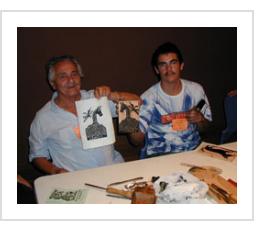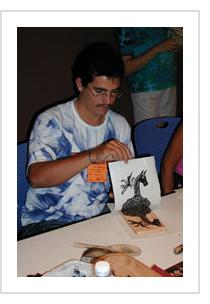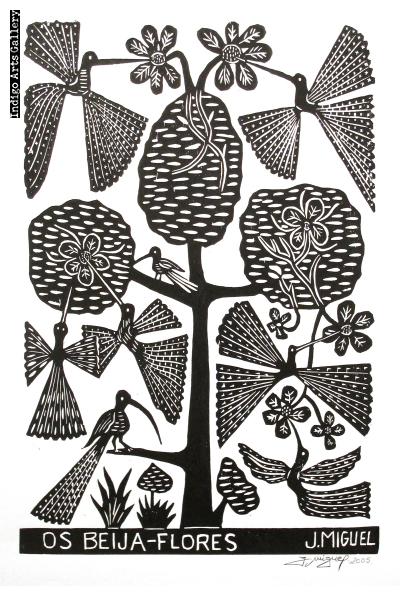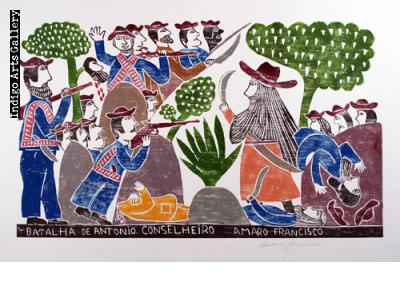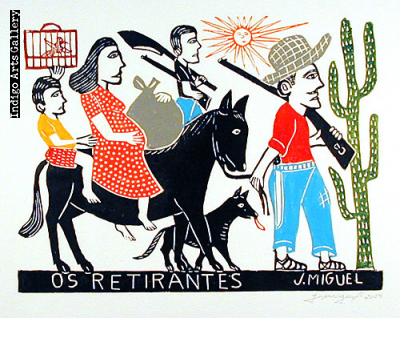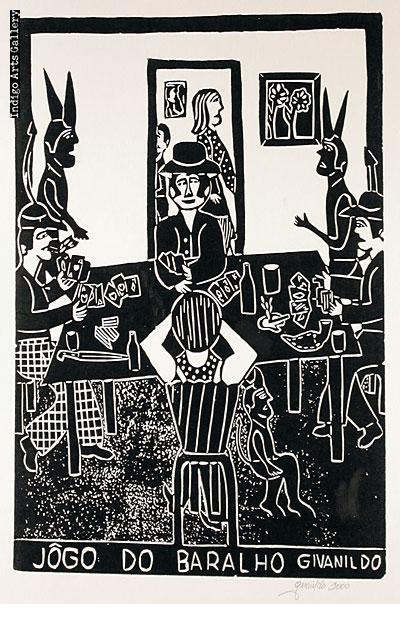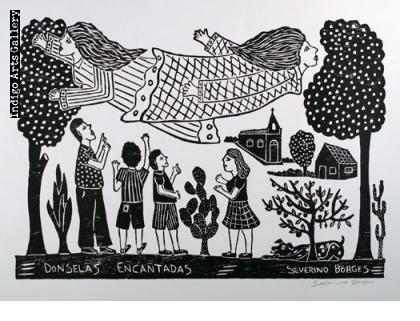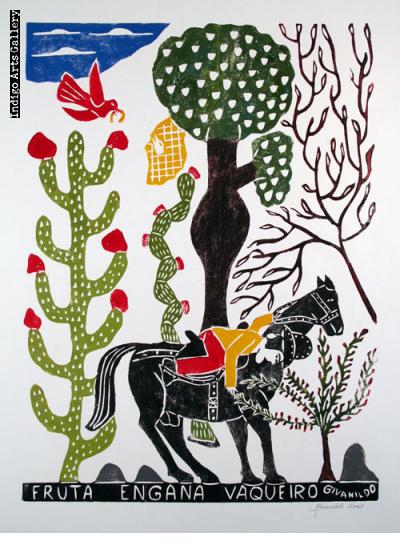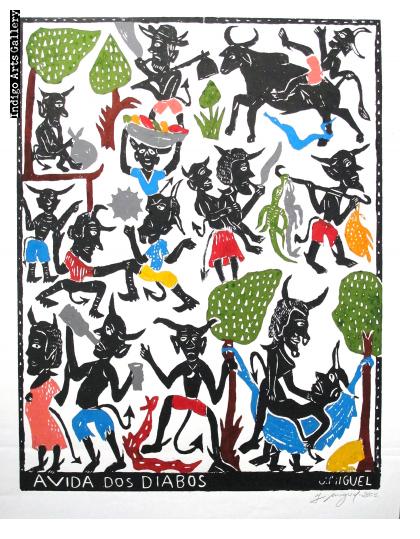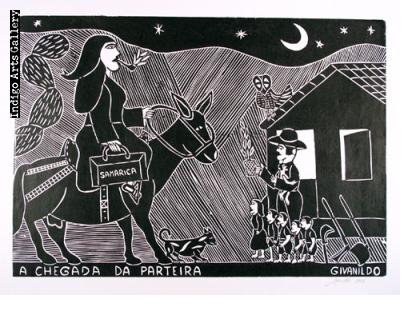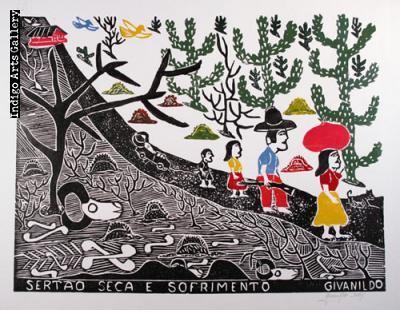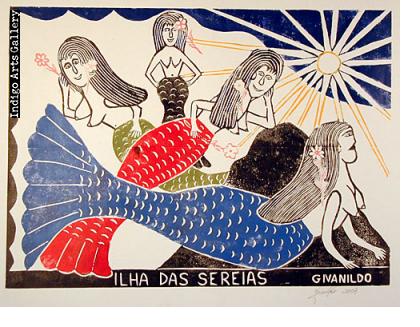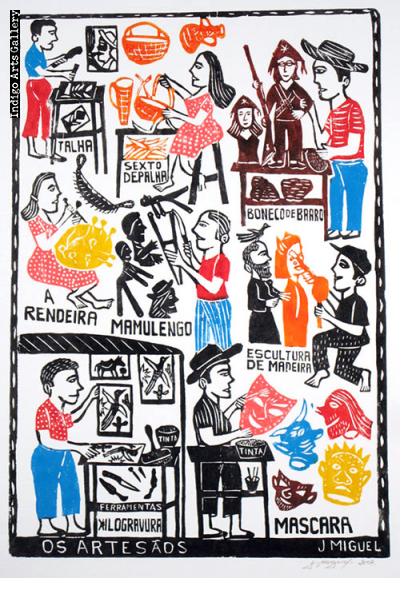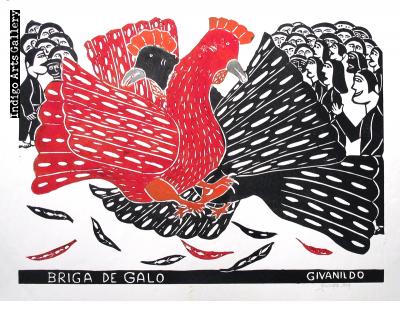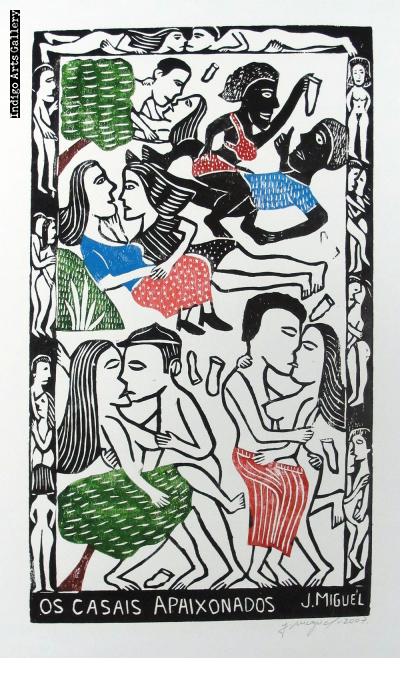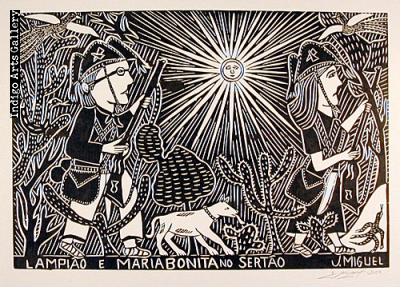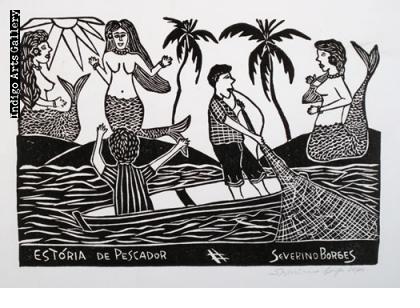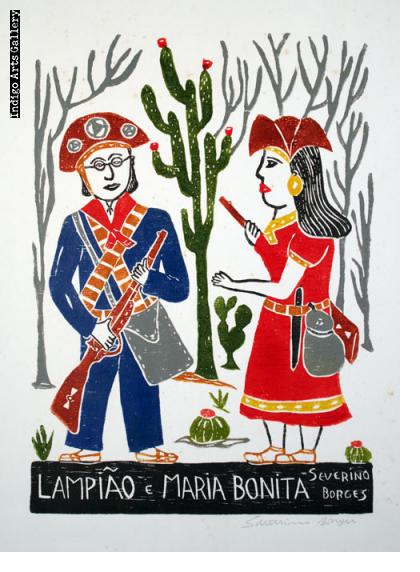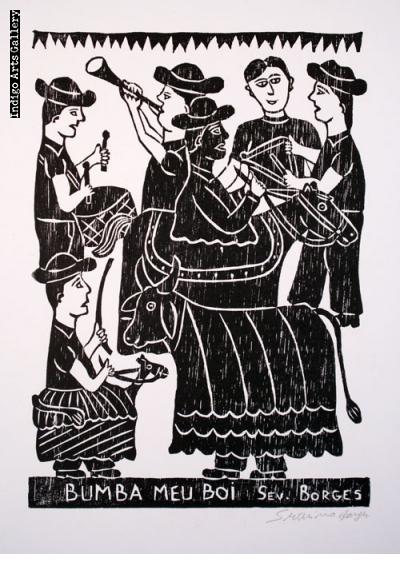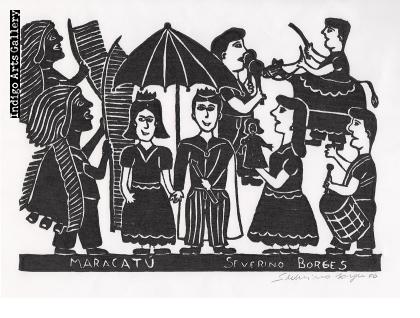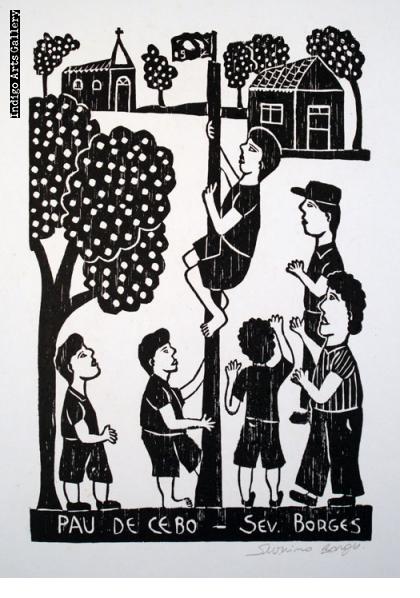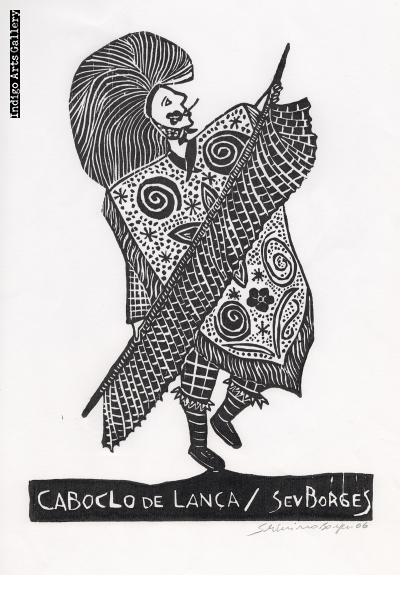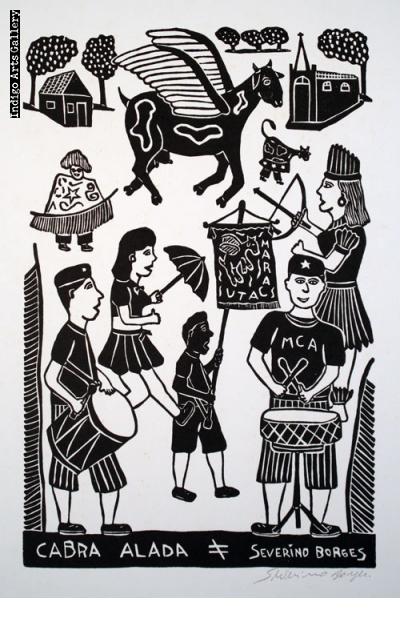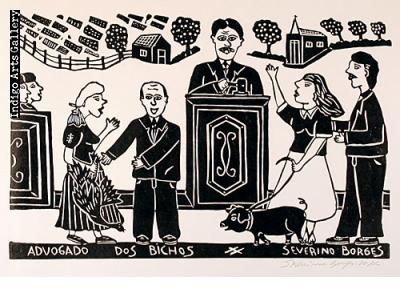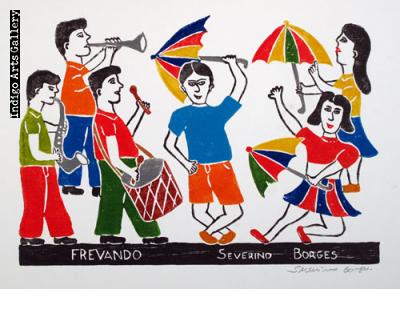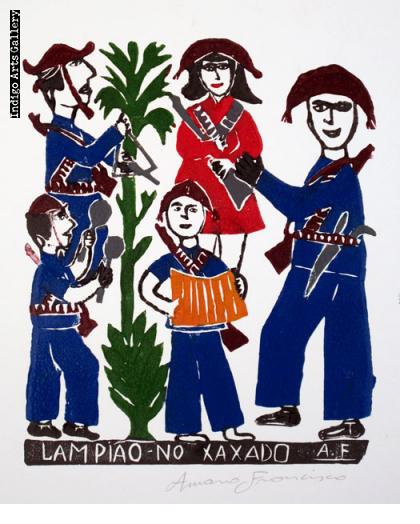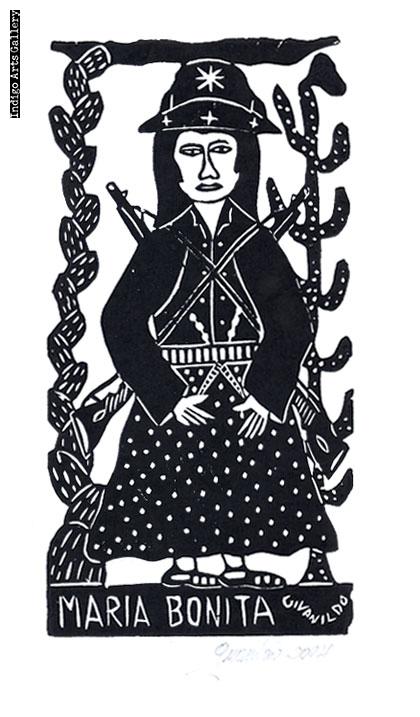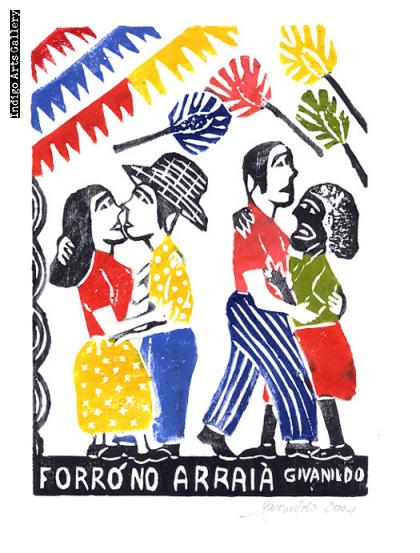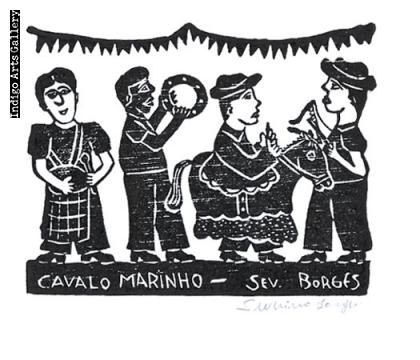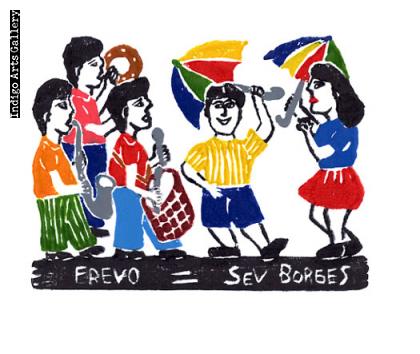About the Artist
Artist and poet José Francisco Borges is Brazil's best-known folk artist working in the wood-cut medium, and his work has been exhibited all over the world. But he comes out of a long tradition of folk poet/artists who publish their own work in the form of small (generally about 6" by 9") cheap chap-books or pamphlets written in verse, known as folhetos. They are also known as literatura de cordel after the way vendors sell them in the marketplace, hanging over a string. This tradition (including the work of Borges) is described in detail by Candace Slater in her book Stories on a String. Other artists working in the folheto woodcut medium include José's sons, José Miguel da Silva and Ivan Borges, his brother Amaro Francisco Borges, his nephews, Givanildo and Severino, Marcelo Soares, and Abrao Batista of Juareiro do Norte in Ceara state.
Marion Oettinger, Jr. describes these folhetos in his book The Folk Art of Latin America: Visiones del Pueblo: "Brazilian chap books deal with popular poetry, accounts of local catastrophes, popular legends, famous crimes, and infamous love affairs. The Man who Married a Donkey, The Son Who Murdered His Parents in Order to Get His Hands on Their Retirement Benefit, The Football Game in Hell, and The Overturned Bus Disaster are examples of the alluring titles found in a typical marketplace. The front of these pamplets usually contain wood-block illustrations of the book's contents, and they, in themselves, form a special type of folk expression.... Frequently, chap book vendors sing the songs in their books or read aloud the contents of their books to market crowds, many of whom are illiterate, and their voices usually draw enormous gatherings."
Jose Francisco Borges began writing verse for folhetos in his 20s, and soon also began to operate a printing press to produce woodcut prints for their covers. In the 1960s his woodcuts came to be recognized in their own right. He was encouraged to produce images in larger formats, in color as well as the more traditional black and white. But even in larger formats, his prints reflect the same popular themes, such as The Honeymoon of Matuto (an archetypal back-country bumpkin), The Monster of the Backlands, The Woman who Put the Devil in a Bottle, and many tales of the legendary bandit Lampiao. Borges' work has now been exhibited all over Brazil as well as in Paris, Zurich, Buenos Aires and in Germany and the United States. The Louvre, the Smithsonian and the Museum of International Folk Art in Santa Fe have exhibited Borges' work. Borges also collaborated with the noted Uruguayan author, Eduardo Galeano, providing fanciful illustrations for his collection of equally fanciful tales, Walking Words. You may read more about Borges and the other woodcut artists in the New York Times article, "From Brazil's Backlands, a Master of a Folk Tradition" (March 27, 2002).
Still more recently, the New York Times carried an excellent article on the cordel tradition, featuring Borges and others, "The Traveling Troubadors of Brazil's Backlands" (June 14, 2005).

